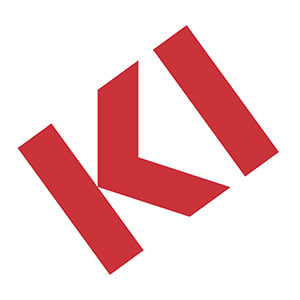Behind the Scenes: Get to Know Our Education Design Experts

Take a behind-the-scenes look at how members of our education team found their way to KI, why they’re passionate about design in education and what they look forward to in schools of the future.
At KI, we’re passionate about education. We are driven by the idea that the design and overall approach to the built environment has critical impact on success in learning. This inspires us to create human-centered design solutions for school furniture that provide a positive experience for everyone involved in the education journey.
To propel our process, we believe it’s imperative to be surrounded by a team of trusted experts who bring real-world expertise—beyond the textbook—of how to advance interior design for education.
In fact, we’ve more than doubled our education team in the past year. By expanding our team, we gain fresh points of view and a greater collective vision for industry-leading design solutions.
The first-person profiles that follow offer an opportunity for you to learn more about our current team and introduce you to our newest education team members.

Bryan Ballegeer, Vice President of Education Markets
What inspired you to enter a career in education?
Supporting students and children has always been a passion of mine. In high school, I was a mentor to elementary and middle school students, and throughout college I continued mentoring through a Big Brother-like program. Upon entering the workplace, I started out in social work and then eventually worked directly in schools. While I admire teachers greatly, I found my skills added more value in ensuring that teachers, students and the community had what they needed from the operations side of school administration.
Describe your journey from the education field to KI.
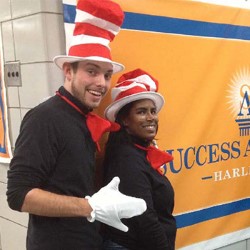 For eight school years, I served as a K-12 operations leader. I spent my final years overseeing the procurement and fulfillment of 46 campuses for a school district of more than 14,000 scholars. KI had become a true business partner to our district, so when I was ready to move to the next chapter in my career, the company had a position that spoke to me. I joined KI in 2017 as an education leader where I was able to support students and teachers by helping them envision and actualize their new environments across the East Coast. Since then, I’ve taken on the national leadership role for both K-12 and higher education for KI.
For eight school years, I served as a K-12 operations leader. I spent my final years overseeing the procurement and fulfillment of 46 campuses for a school district of more than 14,000 scholars. KI had become a true business partner to our district, so when I was ready to move to the next chapter in my career, the company had a position that spoke to me. I joined KI in 2017 as an education leader where I was able to support students and teachers by helping them envision and actualize their new environments across the East Coast. Since then, I’ve taken on the national leadership role for both K-12 and higher education for KI.
From your perspective, what is the power of design or space in education?
James Baldwin once said, “The purpose of education is to create in a person the ability to look at the world for themselves, to make their own decisions.” At KI, we understand that it all starts with students and teachers who know the culture and goals of the school community. For that reason, we do not prescribe what a school should do. Rather, we help the school uncover how its spaces can accentuate what they’re aiming to accomplish, always with the mindset of “students first.”
What is your favorite part about your work?
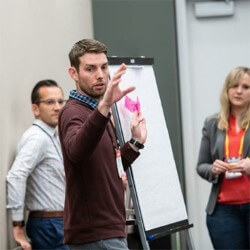 I enjoy variety! One day, I may help a K-12 district by evaluating contracts and pricing agreements that best suit their needs, and the following day I’ll spend six hours with a group of university students and faculty doing a design thinking workshop where they have the opportunity to design their own campus area. By the end of the week, I’m meeting with KI’s design & development team and manufacturing departments to ensure a new product is right for KI and adds value for our clients. This spectrum of work I get to be a part of is incredibly rewarding and always starts with “How does this aid a student?”
I enjoy variety! One day, I may help a K-12 district by evaluating contracts and pricing agreements that best suit their needs, and the following day I’ll spend six hours with a group of university students and faculty doing a design thinking workshop where they have the opportunity to design their own campus area. By the end of the week, I’m meeting with KI’s design & development team and manufacturing departments to ensure a new product is right for KI and adds value for our clients. This spectrum of work I get to be a part of is incredibly rewarding and always starts with “How does this aid a student?”
Is there anything you’d like to see change about education in the next 5 or 10 years?
In recent years, I’ve seen a significant shift that I hope becomes mainstream. This shift is centered around schools and institutions getting back to or resetting their mission. Over the past several decades, education standards, curricula and practices have become quite homogenized. K-12 and higher education institutions are beginning to buck this trend by recentering on what their specific value, culture and expertise are and offering that as an option for the student populations that seek it. While some level of commonality is good, a diverse U.S. population requires diverse educational options across grades and ages.
Jonathan Matta, National Education Market Leader
What inspired you to enter a career in education?
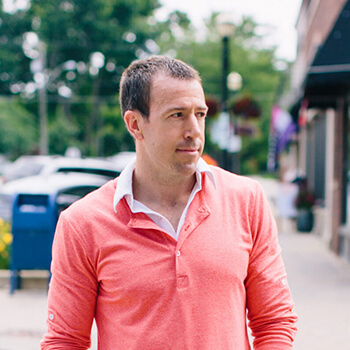 In 2011, my wife and I dropped off our first born for her first day of school. As she walked through the door, with far more bravery than her dad, I noticed how her backpack was bigger than her body. At that moment, as a parent, you see your child taking their first step toward something beyond the family unit. Later that day, I sat thinking to myself that the promise of her future and what she might experience will largely be a byproduct of her school experiences. As a person who is inclined to action and service, I thought “What might it look like for us to help re-imagine education systems?”
In 2011, my wife and I dropped off our first born for her first day of school. As she walked through the door, with far more bravery than her dad, I noticed how her backpack was bigger than her body. At that moment, as a parent, you see your child taking their first step toward something beyond the family unit. Later that day, I sat thinking to myself that the promise of her future and what she might experience will largely be a byproduct of her school experiences. As a person who is inclined to action and service, I thought “What might it look like for us to help re-imagine education systems?”
Describe your journey from the design field to KI.
In my junior year of undergraduate work, I called my mother, who was a teacher, and told her that I feared I had made a mistake in my coursework. I wanted to be a teacher. At the time, I was a collegiate athlete and was at this university by way of my athletic ability, not financial means. That meant I had a ticking clock that was nearing its end, and with it, ending my financing. I recall my mother affectionately telling me, “You’ll find your way…” That moment, as well as a book called Nudge about decision-making framing that my wife gifted me, helped launched me into executive-level graduate work in design thinking. At Stanford’s d.school and IDEO-U, I began to shape an experiential graduate journey for myself with the goal of becoming a better designer. I’ve now practiced design thinking for nearly 12 years, and I’ve applied design thinking and strategy to everything from product to business creation. The one theme that runs through it all is leveraging the power of design to deliver and drive innovation into education systems, all for the betterment of the users we serve.
From your perspective, what is the power of design or space in education?
Design is a teacher. Borrowing from Socrates, it is one that “cannot teach anybody anything.” Rather, it “can only make them think.” Design thinking puts the user at the center of everything. Power to the user is what unlocks experiences and experiments in learning that are authentic to that person. Design also puts the school, leaders, teachers, parents and community in alignment on the idea of serving the students above all else.
What does your day-to-day look like at KI?
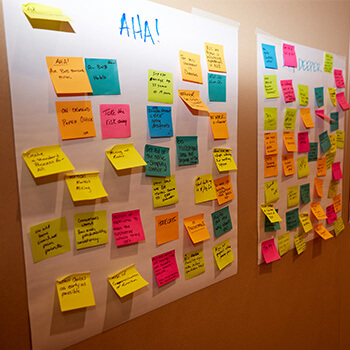 My typical day involves a lot of thinking about cultural groups, needs, wants, feelings and fears. I lead an internal research team to form definitions that inspire industrial designers to create breakthrough and “disruptive” product solutions.
My typical day involves a lot of thinking about cultural groups, needs, wants, feelings and fears. I lead an internal research team to form definitions that inspire industrial designers to create breakthrough and “disruptive” product solutions.
Delivering innovation in product creation is part of our "why" and core purpose in that we seek to improve lifelong learning and the experiences that promote and enhance learning experiments. Through immersive research in cultural extremes, we bring deep levels of unsurfaced user needs into our product and process creation, furthering our contributions to what the current education system might become in the near future.
Is there anything you’d like to see change about education in the next 5 or 10 years?
I’d like to see experiences and experiments in learning, creation and making. I’d like to see that we move beyond an archaic, industrial model of education and shift entirely to a system that aligns with the way humans actually learn.
Marcus Batista, K-12 Education Specialist
What inspired you to enter a career in education?
Besides having a legacy of teachers in my family, I believe that quality education for everyone is essential to a functioning democratic society and wanted to contribute to this in my community. I chose to work in elementary schools because that was the age where I remember being most curious and my teachers encouraging my drive to learn, experiment and create.
Describe your journey from the education field to KI.
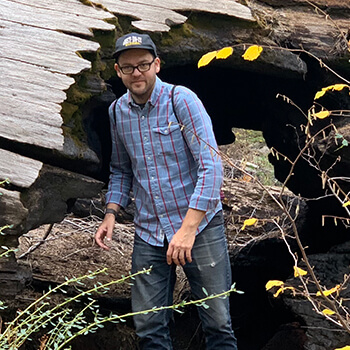 In a way, my journey was a full circle. I worked for almost a decade in facilities and operations in retail, e-commerce and, oddly enough, animation before deciding to teach. After spending some time teaching in New York City classrooms, I found an opportunity to incorporate my operations background as a school facilities and procurement leader for a district of schools. I loved that I could go from supporting a class of students to helping thousands by creating beautiful learning spaces! In procurement, I was a huge fan of KI in our classrooms. Evidently, I was a big enough fan to now spread the word far and wide!
In a way, my journey was a full circle. I worked for almost a decade in facilities and operations in retail, e-commerce and, oddly enough, animation before deciding to teach. After spending some time teaching in New York City classrooms, I found an opportunity to incorporate my operations background as a school facilities and procurement leader for a district of schools. I loved that I could go from supporting a class of students to helping thousands by creating beautiful learning spaces! In procurement, I was a huge fan of KI in our classrooms. Evidently, I was a big enough fan to now spread the word far and wide!
From your perspective, what is the power of design or space in education?
Students should know that their role as a learner is important. As space designers, it’s our duty to preserve their notion of unlimited potential for as long as humanly possible. Teachers need to connect with their students and practice their art. A thoughtfully designed, well-maintained space can facilitate both.
What is a memorable experience you had as a learner that stuck with you?
 From the start of preschool, I was an awkward kid and felt like I didn’t fit in. But my first-grade teacher was able to identify my talents and what was special about me. Thanks to her, I can claim the title of first student to illustrate the cover of the Orchard Hill Elementary School newsletter! That kind of attention was encouraging and made me want to stand out – in a good way.
From the start of preschool, I was an awkward kid and felt like I didn’t fit in. But my first-grade teacher was able to identify my talents and what was special about me. Thanks to her, I can claim the title of first student to illustrate the cover of the Orchard Hill Elementary School newsletter! That kind of attention was encouraging and made me want to stand out – in a good way.
What’s your favorite piece of KI furniture?
The Ruckus family, particularly the chair, was the piece that first made KI stand out to me when I was a purchaser. The look caught my attention, but the engineering and versatility stood out as one-of-a-kind.
Emily McGinnis, K-12 Education Specialist
What inspired you to enter a career in education?
As a young kid, I would always “play school” with my sisters, friends and even my stuffed animals. Of course, I was always the teacher! I was also part of a peer advisory class in high school where I got an opportunity to work in elementary classrooms with students, and I loved it. However, when I went to college, I wanted a career where I would make money, and I knew education was not it. So, I started as a pre-med student, but by the end of my first year, I realized I didn’t enjoy that major and wanted to be in education. I ended up getting a degree in sociology and then went on to get my master’s degree in education and later in K-12 administration, as well as a focus certificate in K-12 reading. I loved my education career for 21 years, but then COVID-19 happened and things changed for me. It will always be a passion of mine to work with educators and students. I have found that it was definitely a calling for me, no matter how I tried to run from it in the beginning.
Describe your journey from the education field to KI.
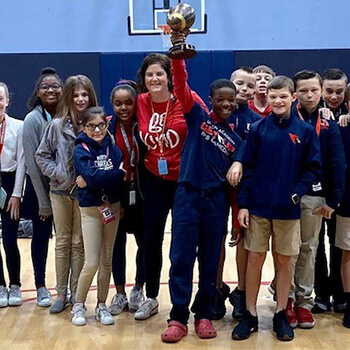 After 21 years in all facets of education—including as a teacher, curriculum coach, assistant principal and principal in elementary, middle, high, public and charter schools—I decided that I was exhausted after COVID-19. While I still loved what I did each day, I needed to find more time for my own children, who were both in high school at the time. I felt like I had missed a lot because of how much time and energy I had put into the schools I was a part of, and I didn’t want to miss anymore. I took three months off without a job during the summer of 2021 and eventually came across this position on LinkedIn. It seemed like the best of both worlds, and it has been!
After 21 years in all facets of education—including as a teacher, curriculum coach, assistant principal and principal in elementary, middle, high, public and charter schools—I decided that I was exhausted after COVID-19. While I still loved what I did each day, I needed to find more time for my own children, who were both in high school at the time. I felt like I had missed a lot because of how much time and energy I had put into the schools I was a part of, and I didn’t want to miss anymore. I took three months off without a job during the summer of 2021 and eventually came across this position on LinkedIn. It seemed like the best of both worlds, and it has been!
From your perspective, what is the power of design or space in education?
I have always said that you can be the best teacher in the world, but if your space is not comfortable for students and conducive for exploration and learning, you can’t function as the best teacher and it will be more difficult for true learning to occur.
Students desire a space where they can collaborate, create and be actively involved in their learning. There are also times when students want to work alone in a quiet spot. The balance of providing a space where both can simultaneously exist is tricky, but it can be done. As an administrator, I would do “culture walks” with my staff to gain insight into our design and space needs. Then, we’d create an action list of what we needed to do to make sure all our spaces represented our culture. Students deserve to come in each day to a clean and organized classroom designed with their learning and social needs in mind.
What is your favorite part about your work?
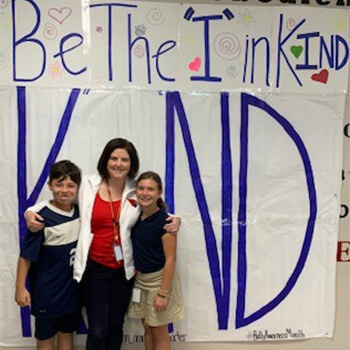 The best part of my work at KI is that I’m able to meet with a variety of people within our company and client base, and each meeting provides an opportunity for me to learn and grow as an educator and employee. I love traveling to different parts of the country to engage in conversations about what is best for students and educators. I really admire that KI strives to be the frontrunner in K-12 education and that I’m given the freedom and encouragement to continue learning educational trends so that I never forget what it’s like to be in a classroom.
The best part of my work at KI is that I’m able to meet with a variety of people within our company and client base, and each meeting provides an opportunity for me to learn and grow as an educator and employee. I love traveling to different parts of the country to engage in conversations about what is best for students and educators. I really admire that KI strives to be the frontrunner in K-12 education and that I’m given the freedom and encouragement to continue learning educational trends so that I never forget what it’s like to be in a classroom.
What is a memorable experience you had as a learner that stuck with you?
Growing up as a student in the 1980s and 1990s and becoming an educator in the 2000s, I’ve seen many changes in education and even some trends that are cycling back around. My most memorable experience as a student learner was as part of a class with opportunities to do creative thinking, writing, project-based learning and field trips. At one point, our class had to build an eight-foot-tall replica of the Statue of Liberty that would become a permanent fixture in the front of my elementary school. We were learning about U.S. history, and we even took a trip at the end of the project to New York City. While it’s not always necessary or best practice to pull students out of their regular classroom setting, I believe students learn best when it becomes an experience, helping them to associate feelings and memories with the learning outcomes.
Katie Clark, Higher Education Market Manager
What inspired you to enter a career in education?
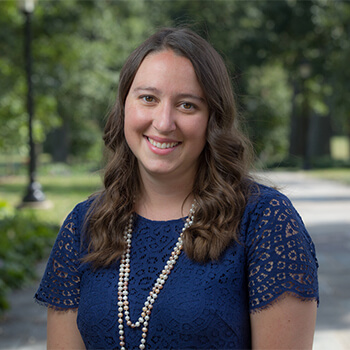 In many ways, I stumbled into a career in education. My first job after graduation was working for a domestic study-away program called Williams-Mystic where students from across the country would come for a semester to study the world’s oceans from an interdisciplinary perspective. I attended the program as an undergraduate student and loved the experiential learning environment. I was reading Moby Dick while sailing on a 130-foot-tall ship and learning about marine ecosystems by playing in tidepools. While working there in admissions and enrollment, I also served as a member of the Board of Trustees and was on the Alumni Board of Directors at my alma mater, Smith College. Between working directly with college students in the field and learning what it really takes to run a college, I realized it was what I wanted to do! It’s the reason I headed off to graduate school to study higher education.
In many ways, I stumbled into a career in education. My first job after graduation was working for a domestic study-away program called Williams-Mystic where students from across the country would come for a semester to study the world’s oceans from an interdisciplinary perspective. I attended the program as an undergraduate student and loved the experiential learning environment. I was reading Moby Dick while sailing on a 130-foot-tall ship and learning about marine ecosystems by playing in tidepools. While working there in admissions and enrollment, I also served as a member of the Board of Trustees and was on the Alumni Board of Directors at my alma mater, Smith College. Between working directly with college students in the field and learning what it really takes to run a college, I realized it was what I wanted to do! It’s the reason I headed off to graduate school to study higher education.
Describe your journey from the education field to KI.
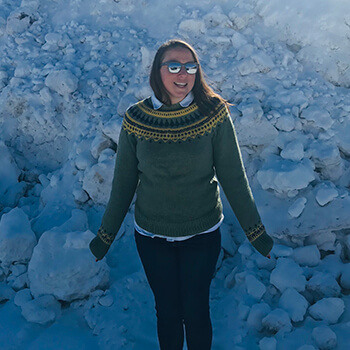 I spent the last eight years running a Leadership and Innovation Center at Swarthmore College in Pennsylvania, where I had the opportunity to build a new center that helped students understand their leadership capacities and creative confidence in the world of design and innovation. I loved working directly with students and seeing them grow and develop into the people they wanted to be. I knew that my work was helping students reach their goals while on campus and beyond. After wearing a number of hats there, I found a passion for design thinking and human-centered design, which is what brought me to KI. I had been on a few projects related to strategic planning and space design on campus and enjoyed thinking about how impactful physical space is to the student experience. In my role at KI, I’m excited to positively impact many more students on college and university campuses across the country as they persist through their studies!
I spent the last eight years running a Leadership and Innovation Center at Swarthmore College in Pennsylvania, where I had the opportunity to build a new center that helped students understand their leadership capacities and creative confidence in the world of design and innovation. I loved working directly with students and seeing them grow and develop into the people they wanted to be. I knew that my work was helping students reach their goals while on campus and beyond. After wearing a number of hats there, I found a passion for design thinking and human-centered design, which is what brought me to KI. I had been on a few projects related to strategic planning and space design on campus and enjoyed thinking about how impactful physical space is to the student experience. In my role at KI, I’m excited to positively impact many more students on college and university campuses across the country as they persist through their studies!
From your perspective, what is the power of design or space in education?
I know that when I feel physically comfortable in a room, I’m going to do better work, be more open to collaboration and have more fun. And don’t we all want to have more fun when we’re working and learning? There are so many pressures and stressors facing college students right now, and I think the least we can do is find ways to create warm, engaging and user-friendly spaces for them. For many students, this means literally every facet of their life: dorm room, dining hall, classroom, study nook, event space, etc. Thoughtful design that works for our college students is going to make their lives better and create spaces where they’re more open to learning.
What is your favorite part about your work?
I really enjoy thinking about the higher education system across the entire country. I’m looking at data and trends from a bird’s-eye view and working directly with educators and campus planners on the ground. I translate and shift among these views and share what I’m seeing and learning at a high level, which will hopefully help individual college students have a better campus experience.
What is a memorable experience you had as a learner that stuck with you?
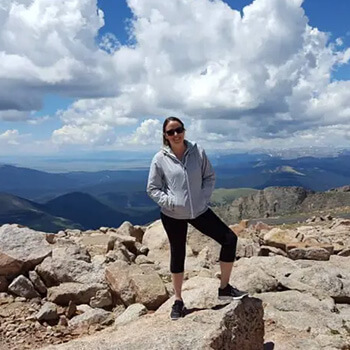 As my friends will tell you, I’m a very proud graduate of a women’s college – not a girl’s school! I went to Smith College, one of the Seven Sisters, not knowing how much it would impact me to be surrounded by strong, intellectual, extraordinary women. It was an incredible experience to see women in every student leadership role making meaningful change. Smith has transformed how I see and interact with the world around me, empowered me with confidence, and provided a beautiful alumnae network of Smithies on which I can lean.
As my friends will tell you, I’m a very proud graduate of a women’s college – not a girl’s school! I went to Smith College, one of the Seven Sisters, not knowing how much it would impact me to be surrounded by strong, intellectual, extraordinary women. It was an incredible experience to see women in every student leadership role making meaningful change. Smith has transformed how I see and interact with the world around me, empowered me with confidence, and provided a beautiful alumnae network of Smithies on which I can lean.
Furnishing Knowledge for Education Design
With the storied backgrounds and varied experiences of Bryan, Jonathan, Marcus, Emily and Katie, our formidable education team brings entirely unique yet collectively inspiring perspectives. Their shared desire to see the future of education progressively develop in design thinking will continue to impact and shape not only our product portfolio but also the future of interior design in education spaces.
We’re excited to share our team’s ongoing insights with you. Stay up to date with their latest research and points of view by subscribing to our Furnishing Knowledge insights blog. You can also connect with them on LinkedIn for real-time updates of their travels across the country and observations in education design.
Subscribe
Stay up to date with the latest trends and more.
